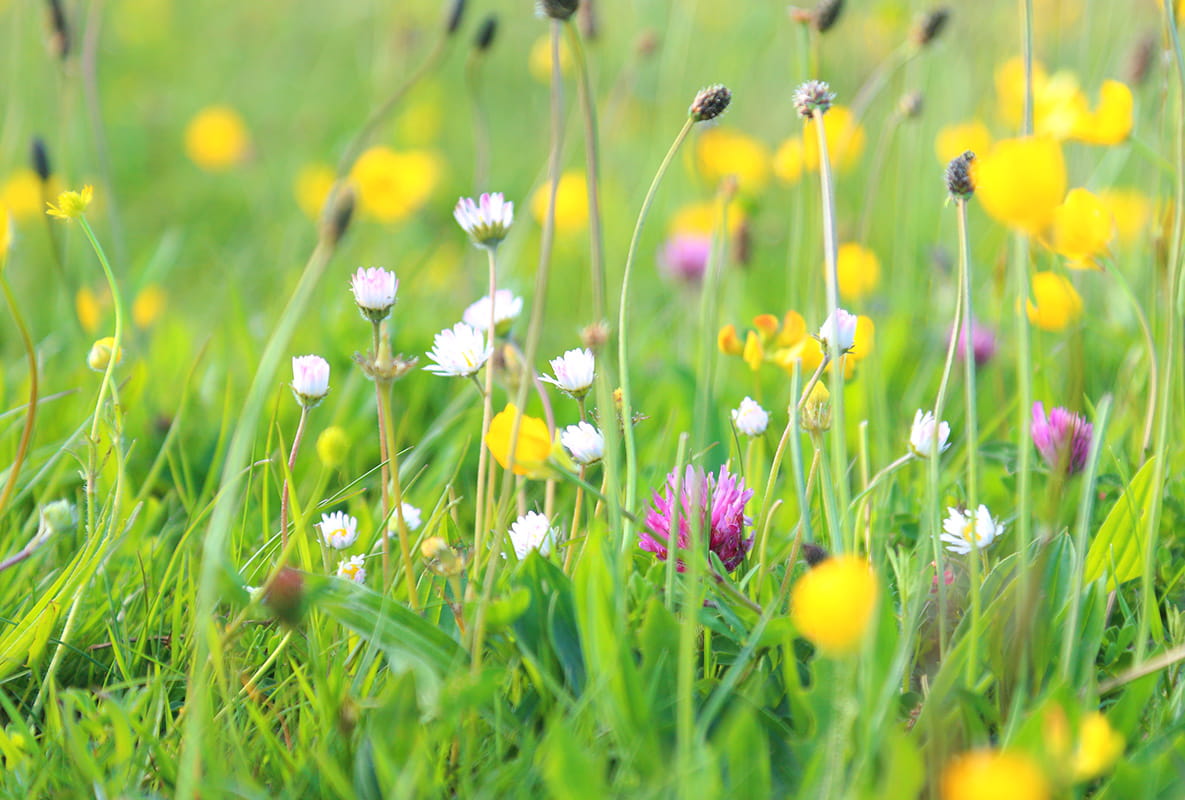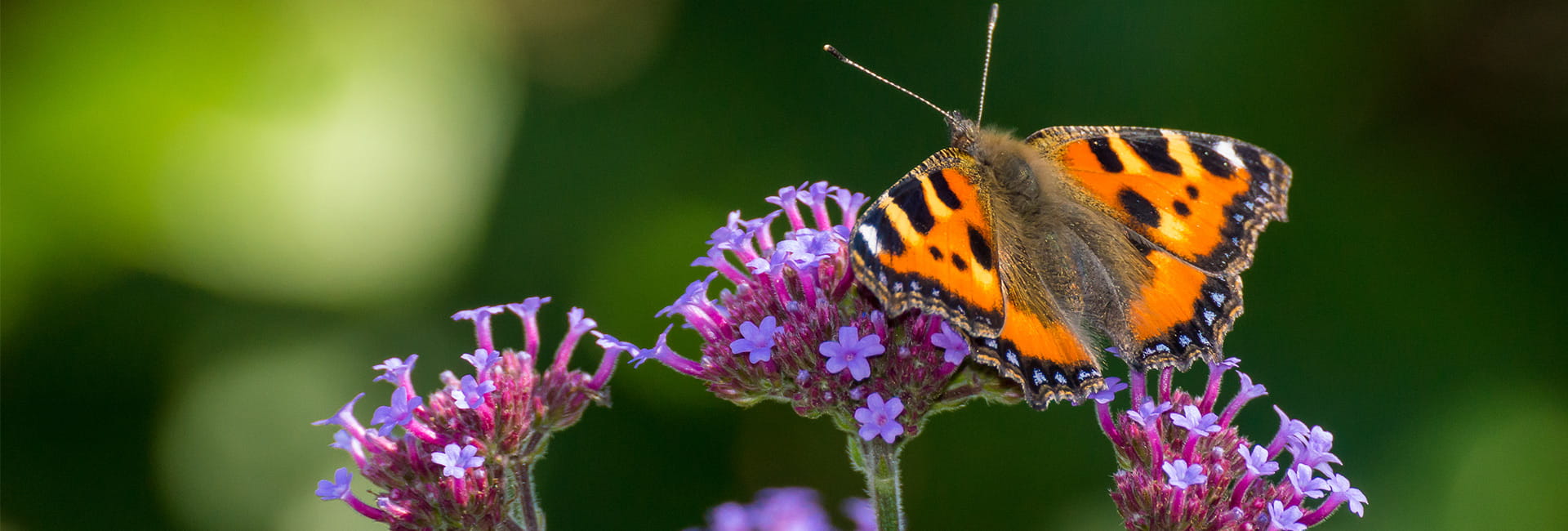How to Create a Wildlife-friendly Garden
There are around 24 million gardens in the UK, so what you grow and how you garden can make a huge difference to the plant and animal life that thrives in your local community.
Having a variety of wildlife and plants in our environment is good for us too, as they support the healthy ecosystems that we rely on to live, such as food, water, and air.
“Often, the simplest things make the biggest difference. Not mowing your lawn as often, installing a bug hotel, and thinking ‘right plant, right place’. Knowing what a specific plant or tree can bring to a garden, in terms of wildlife value, is so important.”
Louise Clarke, Group Head of Sustainability at Berkeley
Here are some easy ways to brighten up your home by turning your garden into a nature haven that’s both beautiful and beneficial to wildlife.
How to Create a Nature-Friendly Garden
1. Pollinator-Friendly Planting

The number one rule of insect-friendly planting is to choose a range of plants that flower throughout the year, so that bees, butterflies, moths, and hoverflies have a steady supply of nectar and pollen. Even in winter, plants like hellebores and witch hazel provide invaluable late-season sustenance.
The shape of flowers matters, too. Look for tube-, bell-, or daisy-shaped blooms which insects can access easily, and avoid ‘frilly’ flowers with little or no pollen. Planting night-scented flowers, such as evening primrose and jasmine, will also attract night-flying insects.
Many pollinator-friendly plants are easily grown from seed or from cuttings—try verbena, foxgloves, cosmos, agastache, rosemary, lavender, and pot marigolds.
2. Nature-Friendly Lawns

How you care for your lawn matters. Mowing less often, and setting the cutting blades a little higher, allows nectar-rich ‘lawn weeds’ like clover to produce flowers. A more natural-looking lawn reduces the need for harmful weed and moss killers.
And if you find grass difficult to grow or maintain, plant some easy-care shrubs or ground cover plants instead. Artificial grass isn’t a good option for biodiversity, though—it blocks access to the soil for burrowing insects, and starves worms and ground beetles of nutrition.
3. Places For Nesting and Roosting

Simply planting a tree is one of the most wildlife-friendly things you can do, as it provides shelter, food, and potential nesting sites. Crab apple and amelanchier are ideal varieties for a small garden, producing pollen-rich blossoms without growing too tall.
Bird boxes, bat boxes, bug hotels, and hedgehog shelters will be appreciated by local wildlife and make your garden more visually interesting. A simple shelter for toads can also be created by burying a terracotta flower pot sideways in the soil.
Plant hedges for birds to safely nest and shelter in bad weather. For added appeal, go for leaves that change colour in autumn (like beech), a hedge with flowers (like dog rose or berberis), or one that has berries (try cotoneaster, rowan, hawthorn, or sea buckthorn).
4. Think Wildlife

Boosting biodiversity in your garden means making life as safe and easy as possible for everything that lives there. Leaving a few gaps under your fences helps to create wildlife corridors for hedgehogs, frogs, and toads.
A log pile will be appreciated by insects, small mammals, frogs, and newts in winter, and might even attract rare species like stag beetles. Simply pile up a collection of twigs and logs in a shady place, then leave it alone and let the wood rot down.
And don’t forget water; a wildlife pond with a gently sloping side attracts birds, dragonflies, and amphibians, but a simple bird bath works, too. Fill them with rainwater captured in a water butt or with a rain chain.
5. Relax Your Approach

Sometimes, encouraging biodiversity is about what you don’t do, rather than what you do.
“Leaving a wild patch in your garden where insect-friendly weeds, like nettles and dandelions, can grow is an easy change.”
Louise Clarke, Group Head of Sustainability at Berkeley
Additional tips include:
- Leave piles of autumn leaves to provide a cosy winter hiding place, then clear them away in February (after checking first for any snoozing creatures).
- Prune fruiting shrubs in late winter or early spring, so that birds and small mammals can benefit from the berries and hips.
- Leave faded flower stems standing in winter so that insects can shelter in the dried flowerheads, and birds can feast on the seeds.
- Don’t over-dig your soil—less digging protects worms and soil organisms.

Nature-Friendly Homes With Berkeley Group
Berkeley Group is proud to have pioneered nature recovery within homebuilding, creating homes and communities that are richer in plant and animal life than when the development began.
In 2017, we were the first homebuilder to commit to boosting biodiversity on every new site. The average net biodiversity gain expected on our sites is over 400%, significantly exceeding the 10% soon to be required by the Government.
“We’re working with experts like Natural England and local Wildlife Trusts, from the very beginning of every development. Our ‘net biodiversity gain’ toolkit is ecology-led, and it has now been used to masterplan 46 sites. When combined, these sites create more than 500 acres of new or measurably improved natural habitats.
We’ve also created wetlands, grasslands, wildflower meadows, urban orchards, and drought-tolerant planting.”
Louise Clarke, Group Head of Sustainability at Berkeley
Examples include planting black poplar trees throughout Kidbrooke Village, which is a native tree species, and a biodiverse roof garden at Goodman’s Fields.
At Berkeley Group, we have a wide selection of properties with beautiful gardens, ready for you to make your own. Search for your new home in a desirable UK location now, or visit Berkeley Inspiration for innovative ideas to elevate your space.
